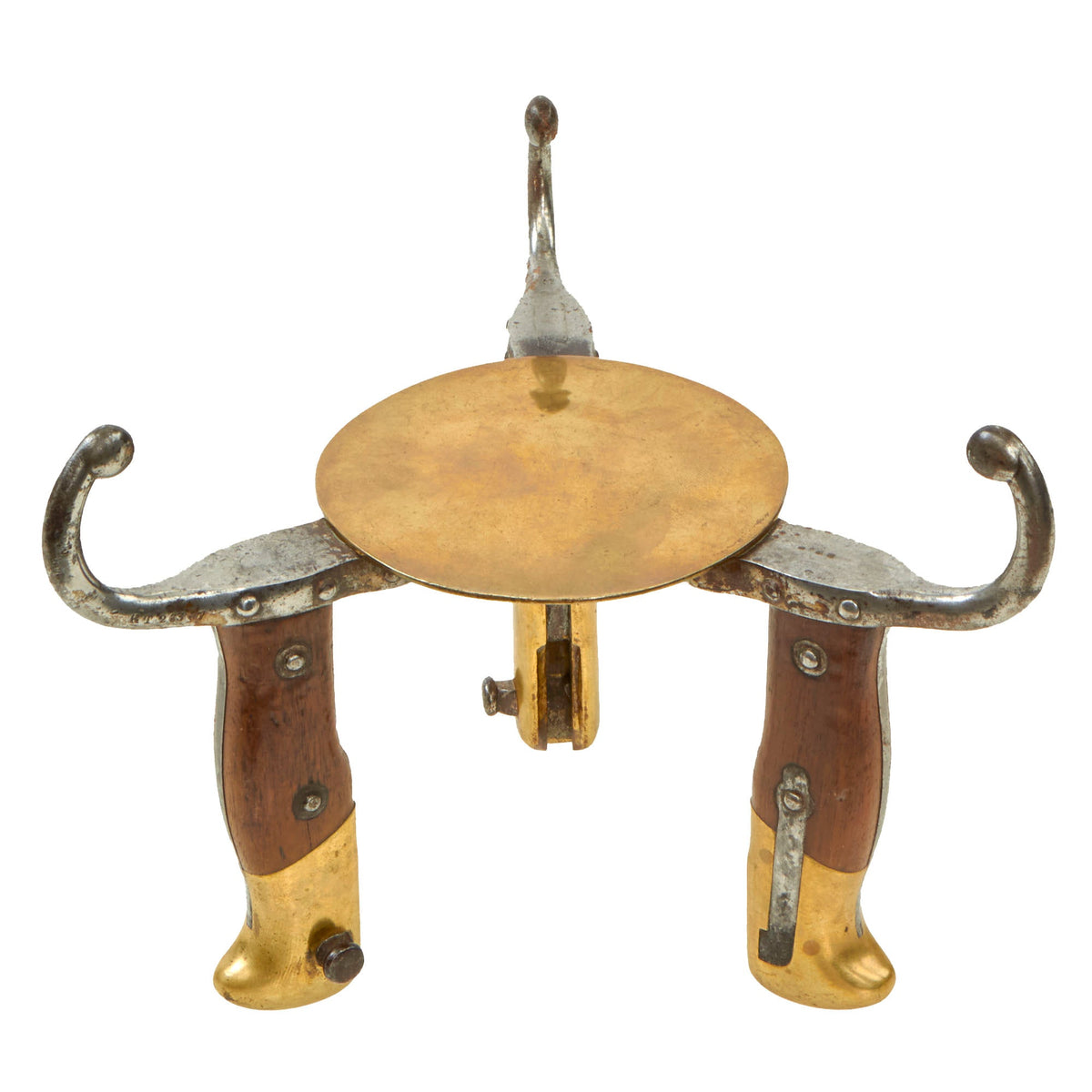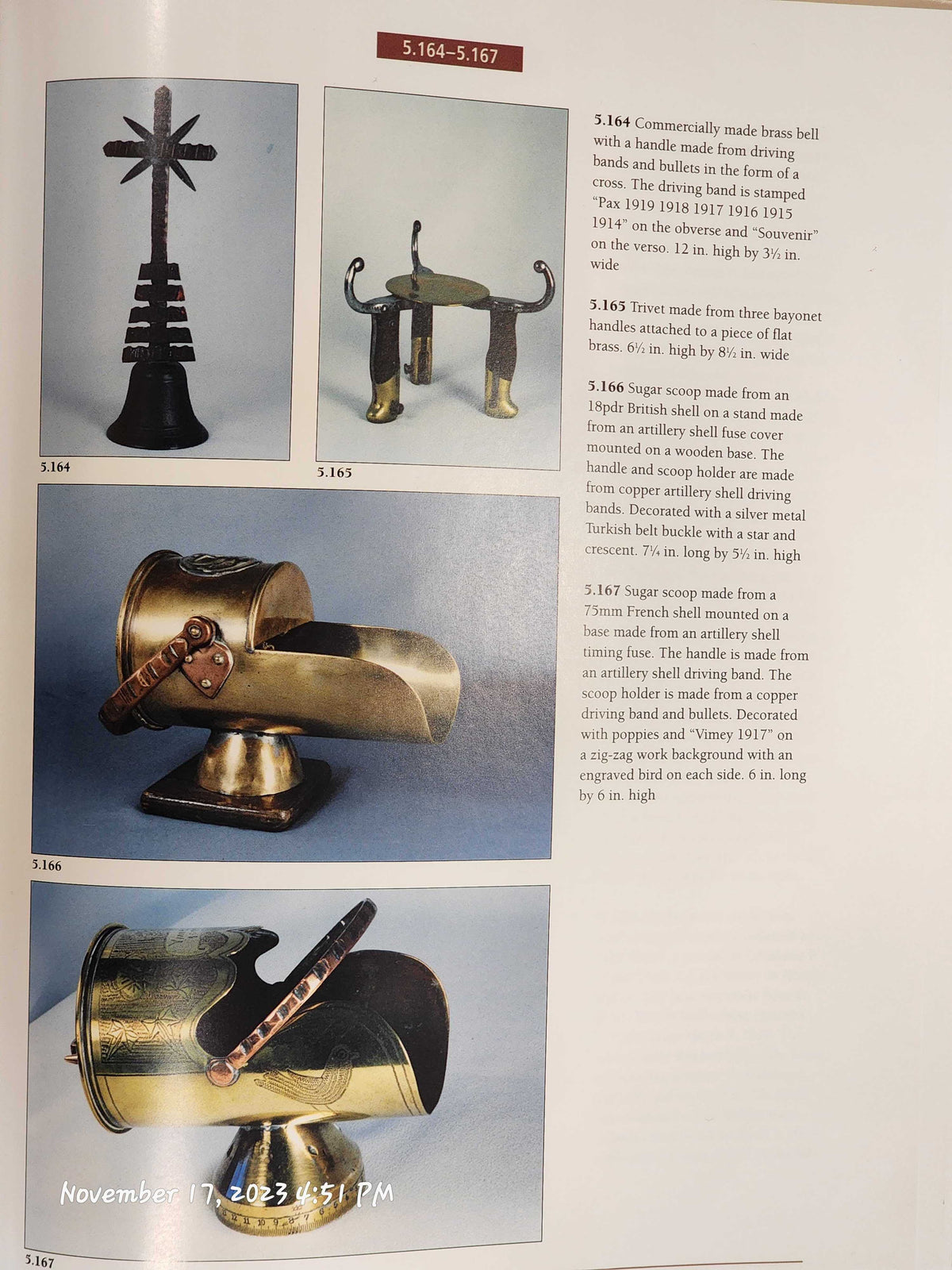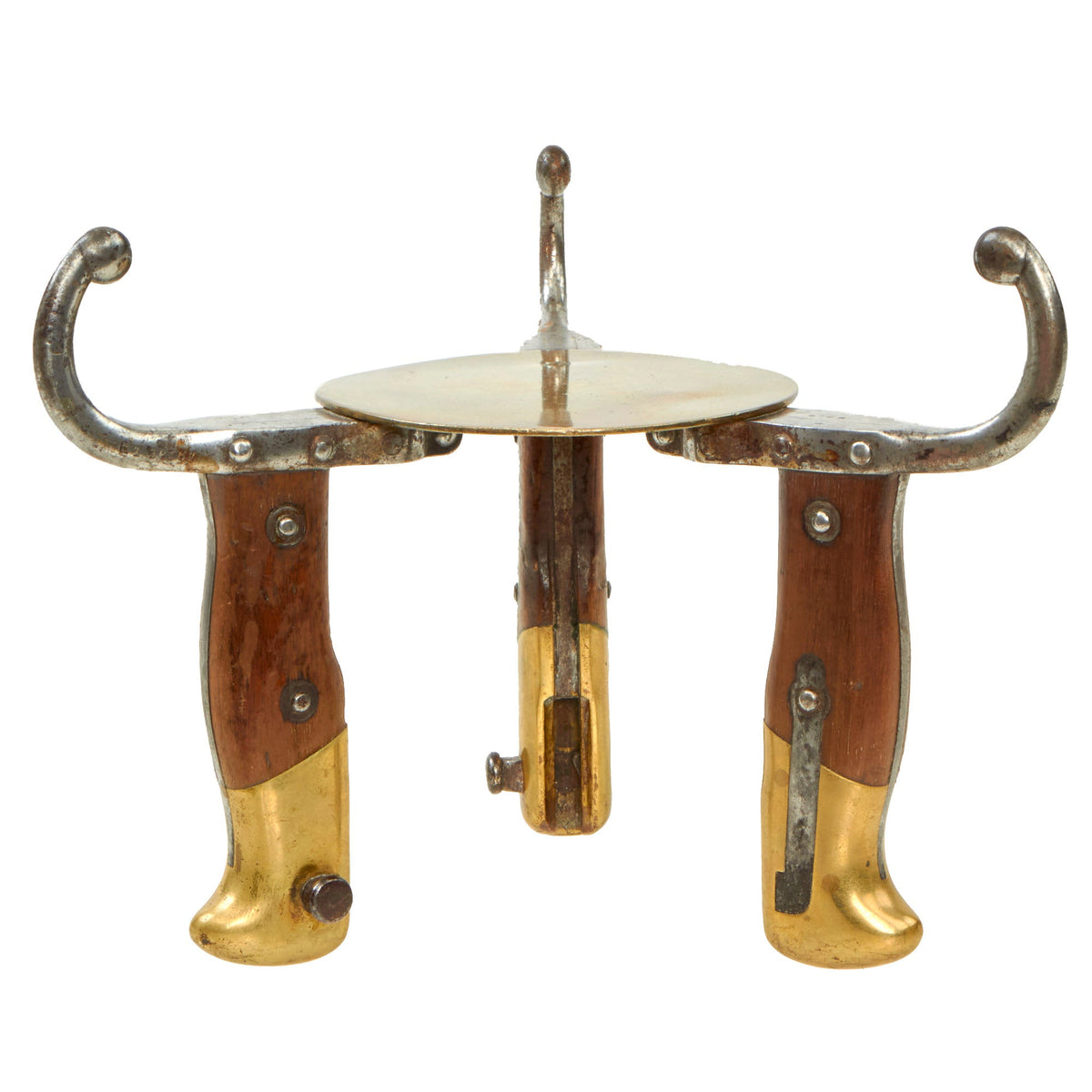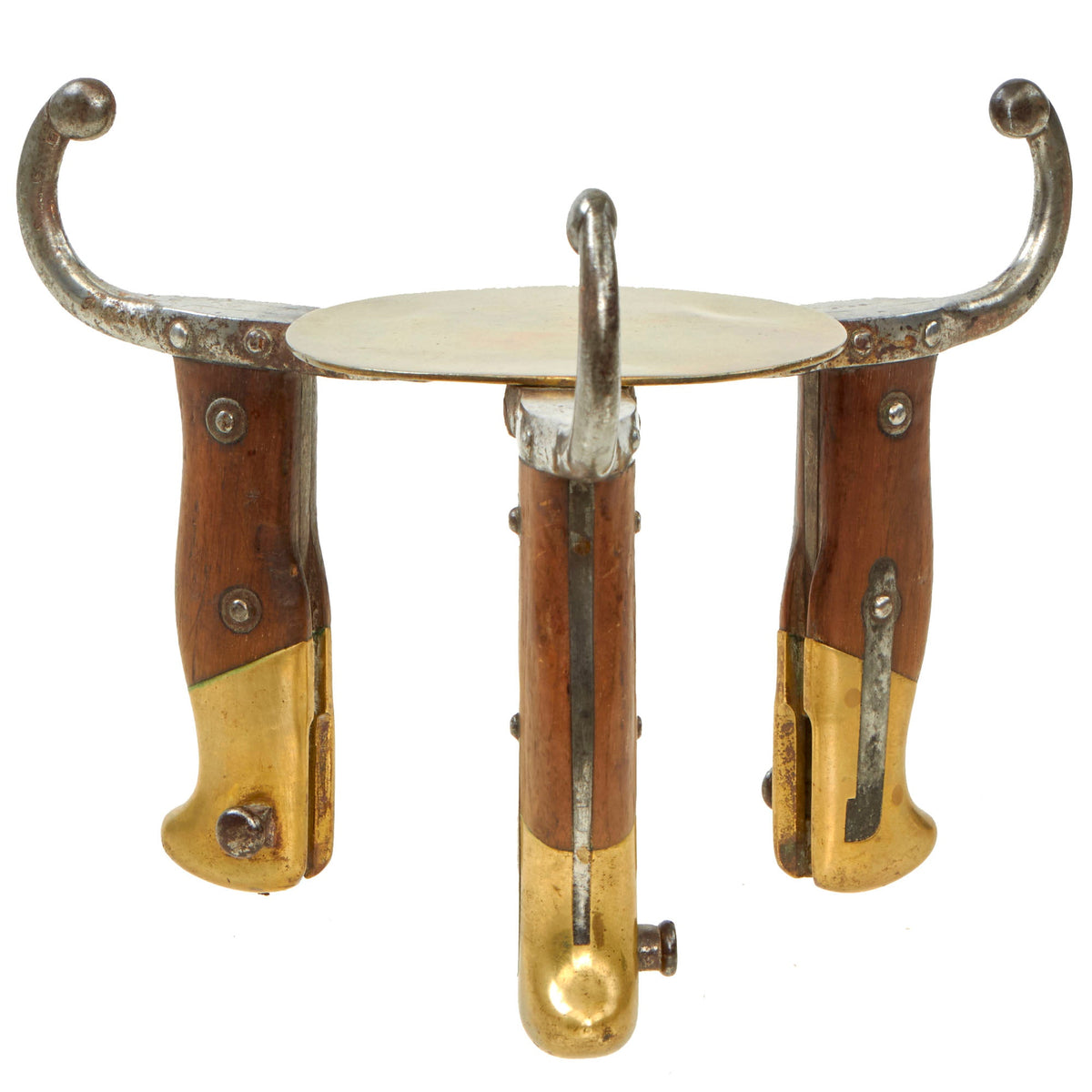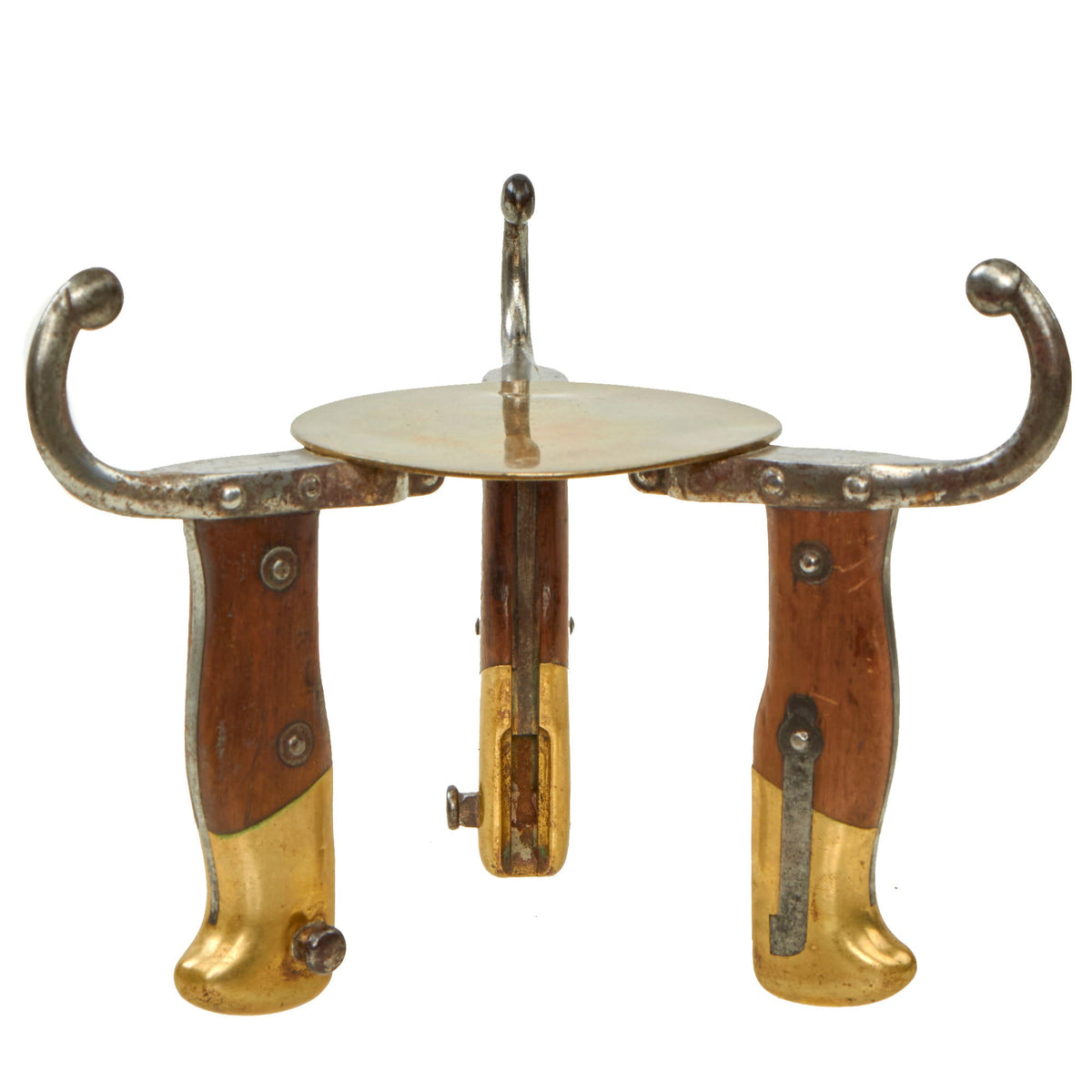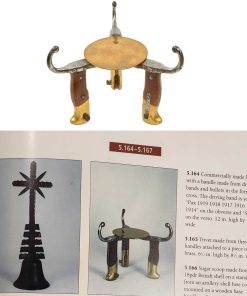Original French WWI Trench Art M1874 Gras Bayonet Trivet As Featured In The Book “Trench Art, An Illustrated History” by Jane Kimball on Page 195 Original Items
$ 295,00 $ 118,00
Original Item: Only One Available. Trench art is any decorative item made by soldiers, prisoners of war, or civilians where the manufacture is directly linked to armed conflict or its consequences. It offers an insight not only to their feelings and emotions about the war, but also their surroundings and the materials they had available to them.
Not limited to the World Wars, the history of trench art spans conflicts from the Napoleonic Wars to the present day. Although the practice flourished during World War I, the term ‘trench art’ is also used to describe souvenirs manufactured by service personnel during World War II. Some items manufactured by soldiers, prisoners of war or civilians during earlier conflicts have been retrospectively described as trench art.
Reference books are an essential part of any collector’s knowledge and growth in their particular field of interest. The 2004 book “Trench Art, An Illustrated History” by Jane Kimball is a comprehensive study of Trench Art and does a wonderful job in presenting the historical context of trench art throughout history. The book covers about 400 pages and includes hundreds of illustrations as well as mountains of primary source material and original photographs that document the evolution, styles and construction of the trench art genre. This trivet is found on page 195.
A trivet is an object placed between a serving dish or bowl, and a dining table, usually to protect the table from heat damage. Whilst tri- means three, and -vet comes from -ped, meaning ‘foot’ / ‘feet’, trivets often have four ‘feet’, and some trivets, including many wooden trivets, have no ‘feet’ at all.
Trivet also refers to a tripod used to elevate pots from the coals of an open fire (the word trivet itself ultimately comes from Latin tripes meaning “tripod”). Metal trivets are often tripod-like structures with three legs to support the trivet horizontally to hold the dish or pot above the table surface. These are often included with modern non-electric pressure cookers. A trivet may often contain a receptacle for a candle that can be lit to keep food warm.
The caption from the page is a lovely description: “Trivet made from three bayonet handles attached to a piece of flat brass. 6 ½ in. high by 8 ½ in. wide.”
The 3 bayonet hilts were taken from French M1874 Gras Bayonets. The M1874 was a conversion of the M1866 Chassepot design that enabled use of the 11.15 x 59 mm. centerfire cartridge. The M1874 rifle is referred to as the Gras, after the French Army officer who developed the conversion, Colonel Basile Gras.
A lovely item ready for display or even use!
Fast Shipping with Professional Packaging
Thanks to our longstanding association with UPS FedEx DHL, and other major international carriers, we are able to provide a range of shipping options. Our warehouse staff is expertly trained and will wrap your products according to our exact and precise specifications. Prior to shipping, your goods will be thoroughly examined and securely secured. We ship to thousands clients each day across multiple countries. This shows how we're dedicated to be the largest retailer on the internet. Warehouses and distribution centres can be located throughout Europe as well as the USA.
Note: Orders with more than one item will be assigned a processing date depending on the item.
Before shipping before shipping, we'll conduct a thorough inspection of the items you have ordered. Today, the majority of orders will be delivered within 48 hours. The delivery time will be between 3-7 days.
Returns
The stock is dynamic and we cannot completely manage it because multiple stakeholders are involved, including our factory and warehouse. So the actual stock may alter at any time. It's possible that you may not receive your order once the order has been made.
Our policy is valid for a period of 30 days. If you don't receive the product within 30 days, we are not able to issue a refund or an exchange.
You can only return an item if it is unused and in the same state as the day you received it. You must have the item in its original packaging.
Related products
Uncategorized
Uncategorized
Armored Burgonet Helmet & Polearm from Scottish Castle Leith Hall Circa 1700 Original Items
Uncategorized
Uncategorized
Uncategorized
Uncategorized
Uncategorized
Armoured Fighting Vehicles of the World: AFVs of World War One (Hardcover Book) New Made Items
Uncategorized
Uncategorized
Uncategorized
Uncategorized
Uncategorized
Uncategorized
Uncategorized
Uncategorized
Uncategorized

